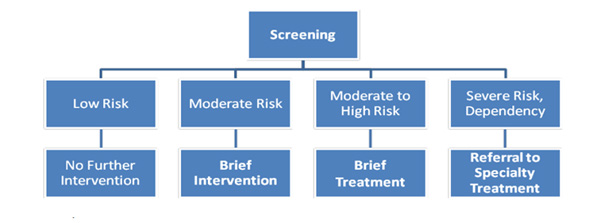DOL and HHS Work Together to Address Youth Substance Use
About the Collaboration
The YouthBuild Program
YouthBuild, administered by the Department of Labor’s Employment and Training Administration (ETA), is an alternative education program that primarily targets out-of-school youth between the ages of 16-24. YouthBuild aims to
- enable disadvantaged youth to obtain the education and employment skills necessary to achieve economic self-sufficiency in occupations that are in-demand and in post-secondary education and training opportunities;
- provide disadvantaged youth with opportunities for meaningful work and service to communities;
- foster the development of employment and leadership skills and commitment to community development among youth in low income communities; and
- expand the supply of permanent affordable housing for homeless individuals and low income families by utilizing the energies and talents of disadvantaged youth.
Learn more about YouthBuild.
SBIRT
The Screening, Brief Intervention, and Referral to Treatment model (SBIRT) is a comprehensive early intervention developed by the Department of Health and Human Services’ Substance Abuse and Mental Health Services Administration (SAMHSA) to identify people who have—or are at risk for—substance use problems and to identify people who need further assessment or referral for treatment. The components of the SBIRT are:
- Screening: A brief universal screening assessment focused on specific behaviors to identify substance-related problems. The assessment typically takes about 5-10 minutes to complete. Examples of screeners that have been used are: the Alcohol Use Disorders Identification Test (AUDIT), Drug Abuse Screening Test (DAST), Alcohol, Smoking, Substance Involvement, Screening Test (ASSIST), and the Cut Down, Annoyed, Guilty, Eye-Opener (CAGE).
- Brief Intervention: As defined by the SAMHSA SBIRT program brief interventions involve 1-5 sessions lasting 5 minutes to an hour. Their goals are to raise awareness of risks and motivate an individual toward acknowledgement of any issues. Interventions occur in a public-health or non-substance abuse treatment setting (e.g. doctor’s office, emergency department, school).
- Brief Treatment: The Goal of brief treatment is to address risky behaviors and thoughts as well as more long-term drinking and drug misuse problems. Treatments typically involve 5-12 sessions, lasting up to an hour and occur in a public-health or non-substance abuse treatment setting (e.g. doctor’s office, emergency department, school).
- Referral to Treatment: Referral of those people with more serious substance abuse issues.

SAMHSA has funded grants to implement SBIRT in states, federally qualified health centers, and medical residencies, and on college campuses across the country. It has been used in a range of health-related settings including primary care centers, hospital emergency rooms, trauma centers, and other community settings.
Learn more about SBIRT.
